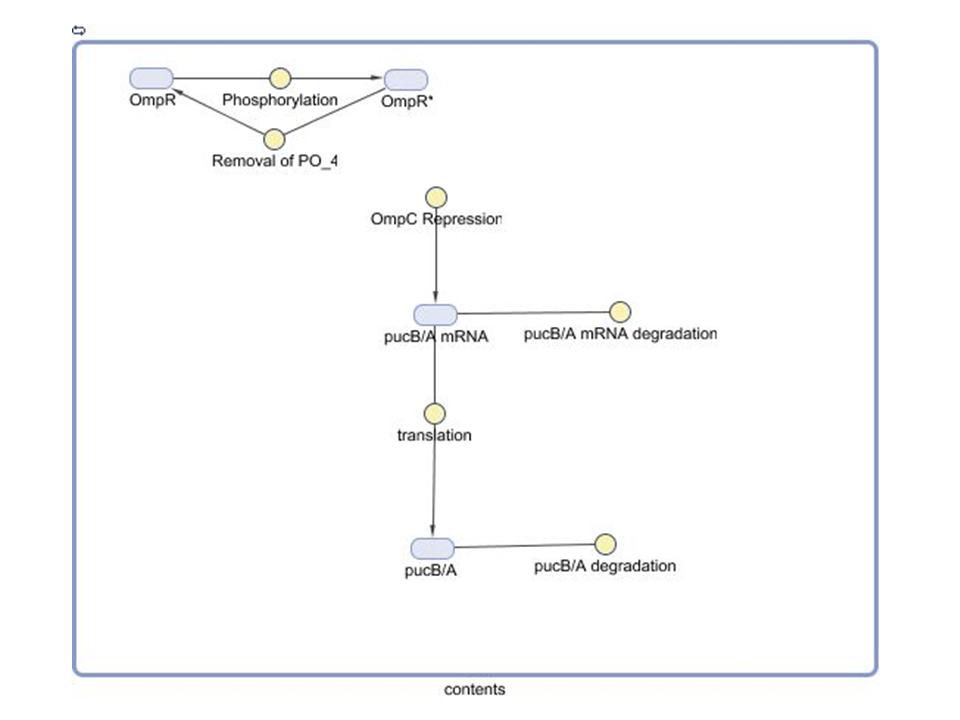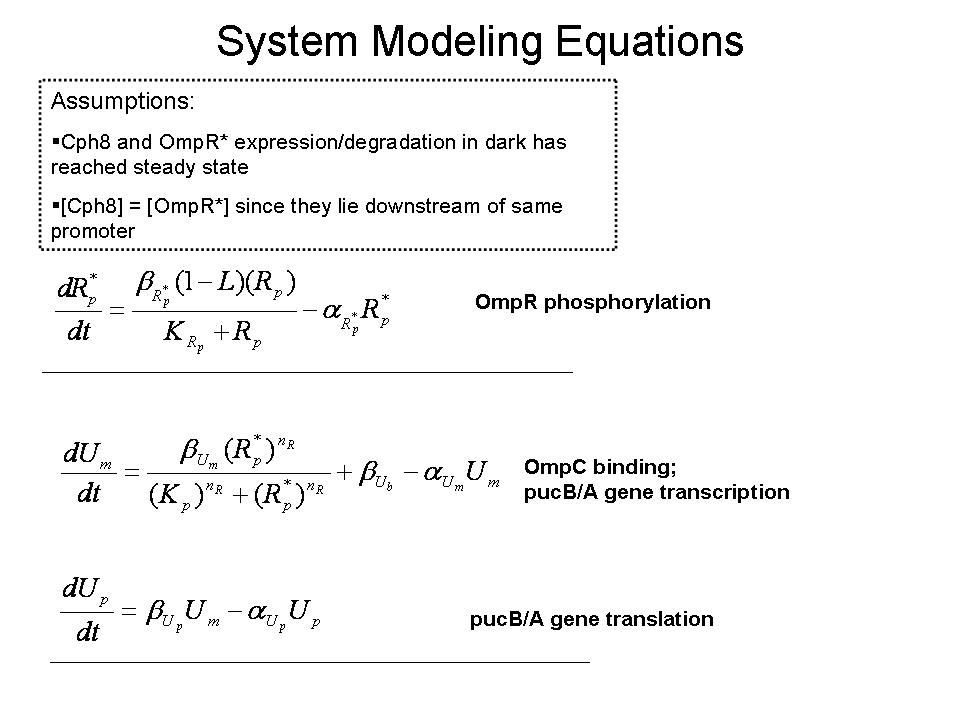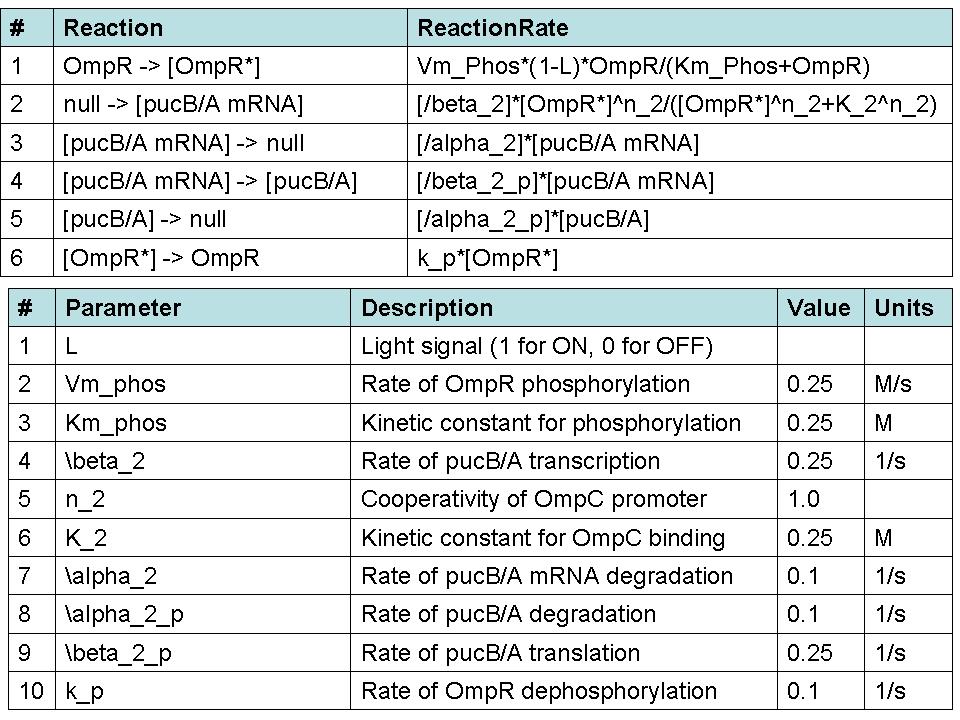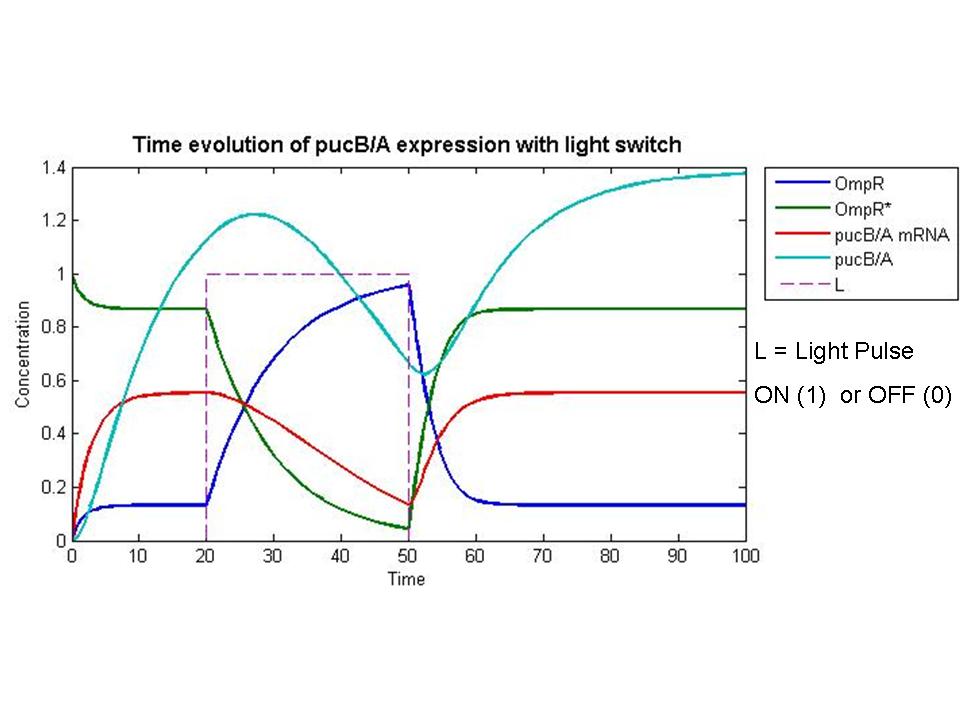Team:Wash U/Biological Parts
From 2009.igem.org
(→Parts) |
|||
| Line 289: | Line 289: | ||
[https://2009.igem.org/Team:Wash_U/Biological_Parts Back To Top]<font size="4"> | [https://2009.igem.org/Team:Wash_U/Biological_Parts Back To Top]<font size="4"> | ||
| - | == '''Characterization''' == | + | == '''Completed Characterization''' == |
<font size="2"> | <font size="2"> | ||
[[Image:Slide2.jpg|480px|left]] The first part of our characterization begins with the puc promoter. The puc promoter is what turns on the entire system naturally in ''Rhodobacter sphaeroides''. The puc promoter is what ultimately controls the number of LH2 light harvesting complexes, which is how our system will yield an increase in photosynthetic efficiency. It is important that we are able to compare the transcription rate of the puc promoter in the two systems so that we can determine exactly how much efficiency is gained by adding a red light sensor. By attaching Green Fluorescent Protein (GFP) to the promoter we can quantify the rate of transcription by measuring the emission of green light using a fluorescence spectrophotometer. We would expect to see more fluorescence with more transcription and vis versa. | [[Image:Slide2.jpg|480px|left]] The first part of our characterization begins with the puc promoter. The puc promoter is what turns on the entire system naturally in ''Rhodobacter sphaeroides''. The puc promoter is what ultimately controls the number of LH2 light harvesting complexes, which is how our system will yield an increase in photosynthetic efficiency. It is important that we are able to compare the transcription rate of the puc promoter in the two systems so that we can determine exactly how much efficiency is gained by adding a red light sensor. By attaching Green Fluorescent Protein (GFP) to the promoter we can quantify the rate of transcription by measuring the emission of green light using a fluorescence spectrophotometer. We would expect to see more fluorescence with more transcription and vis versa. | ||
| + | |||
| + | |||
| + | == '''Future Characterization''' == | ||
<br><br><br><br><br><br><br><br><br><br><br>[[Image:Slide3.jpg|480px|left]] The next step in our characterization of our synthetic red light response system is to analyze changes in phosphorylation of ompR in ''Rhodobacter sphaeroides''. In our final system, we only want puc genes to be transcribed and expressed via halting the autophosphorylation of ompR, not simply the puc promoter as it naturally occurs. By placing the ompR coding region downstream of the red light sensor and upstream of a terminator our modified system controls expression of the puc genes by the red light sensor. It should be impossible for the puc promoter to directly cause the transcription of puc genes due to the terminator, but instead, transcription of the puc genes must be activated via decreasing the presence of phosphorylated ompR. The end target of ompR transcription is the ompC promoter, located directly upstream of the puc genes. Placing GFP on the ompC transcript will show how often the promoter is transcribed and how often ompR is phoshorylated. | <br><br><br><br><br><br><br><br><br><br><br>[[Image:Slide3.jpg|480px|left]] The next step in our characterization of our synthetic red light response system is to analyze changes in phosphorylation of ompR in ''Rhodobacter sphaeroides''. In our final system, we only want puc genes to be transcribed and expressed via halting the autophosphorylation of ompR, not simply the puc promoter as it naturally occurs. By placing the ompR coding region downstream of the red light sensor and upstream of a terminator our modified system controls expression of the puc genes by the red light sensor. It should be impossible for the puc promoter to directly cause the transcription of puc genes due to the terminator, but instead, transcription of the puc genes must be activated via decreasing the presence of phosphorylated ompR. The end target of ompR transcription is the ompC promoter, located directly upstream of the puc genes. Placing GFP on the ompC transcript will show how often the promoter is transcribed and how often ompR is phoshorylated. | ||
<br><br><br><br><br><br><br><br><br>[[Image:Slide4.jpg|480px|left]] Part three of our characterization measures the effectiveness of the red light sensor in downregulating the phosphorylation of ompR. This setup is identical to that of part two except we have introduced the red light sensor. Now, the rate of ompR autophosphorylation will be halted by binding to a domain on the light-activated EnvZ kinase analogue. GFP is still attached to the end product, the ompC promoter. By comparing the fluorescence of GFP in this scenario compared with the second scenario the decrease in rate of phosphorylation should be apparent due to the activity of the red light sensor. | <br><br><br><br><br><br><br><br><br>[[Image:Slide4.jpg|480px|left]] Part three of our characterization measures the effectiveness of the red light sensor in downregulating the phosphorylation of ompR. This setup is identical to that of part two except we have introduced the red light sensor. Now, the rate of ompR autophosphorylation will be halted by binding to a domain on the light-activated EnvZ kinase analogue. GFP is still attached to the end product, the ompC promoter. By comparing the fluorescence of GFP in this scenario compared with the second scenario the decrease in rate of phosphorylation should be apparent due to the activity of the red light sensor. | ||
Revision as of 22:00, 18 October 2009

 "
"








